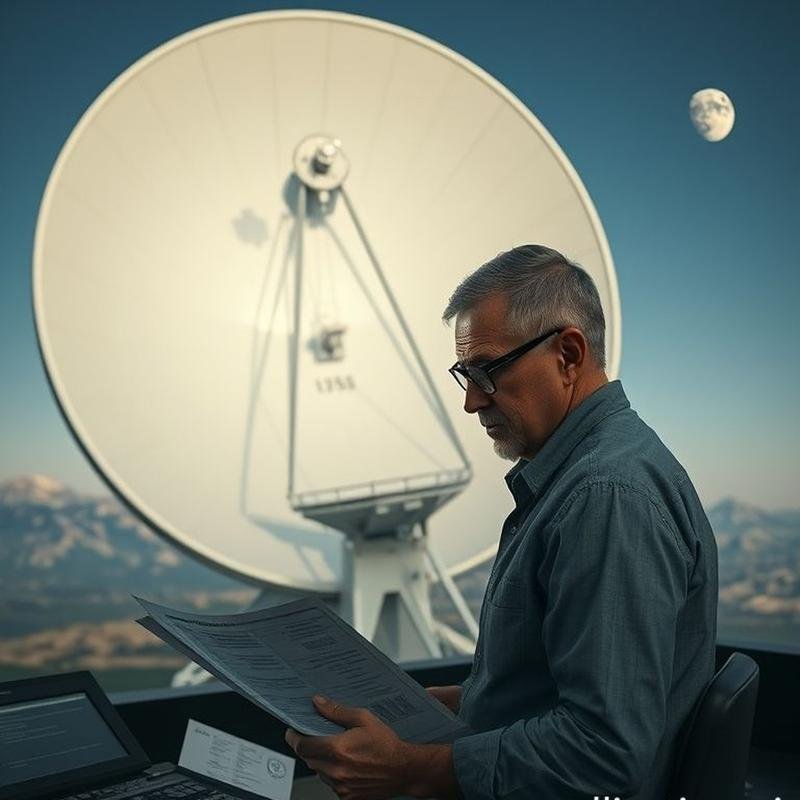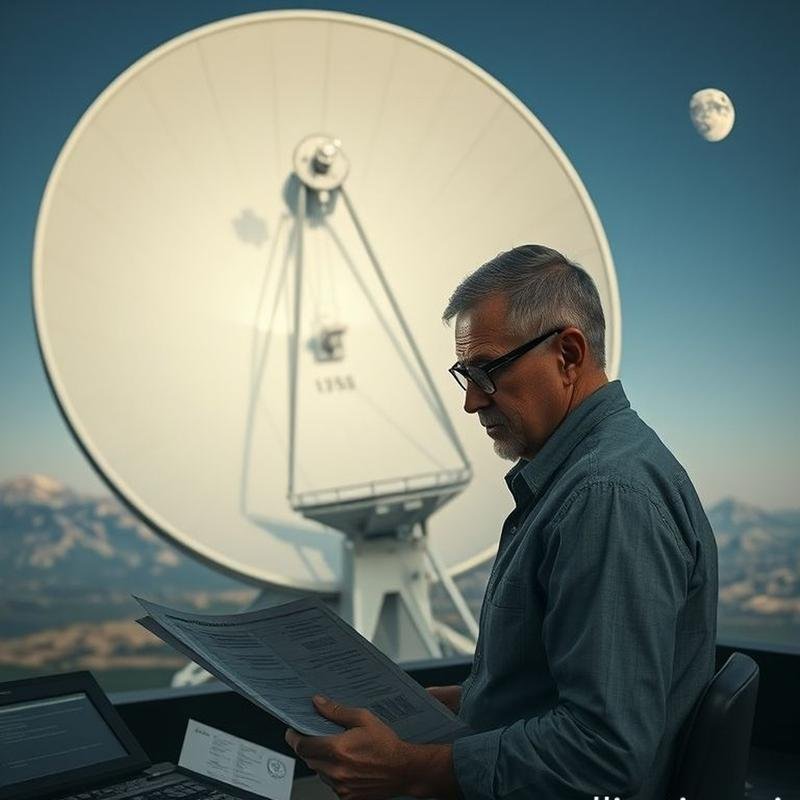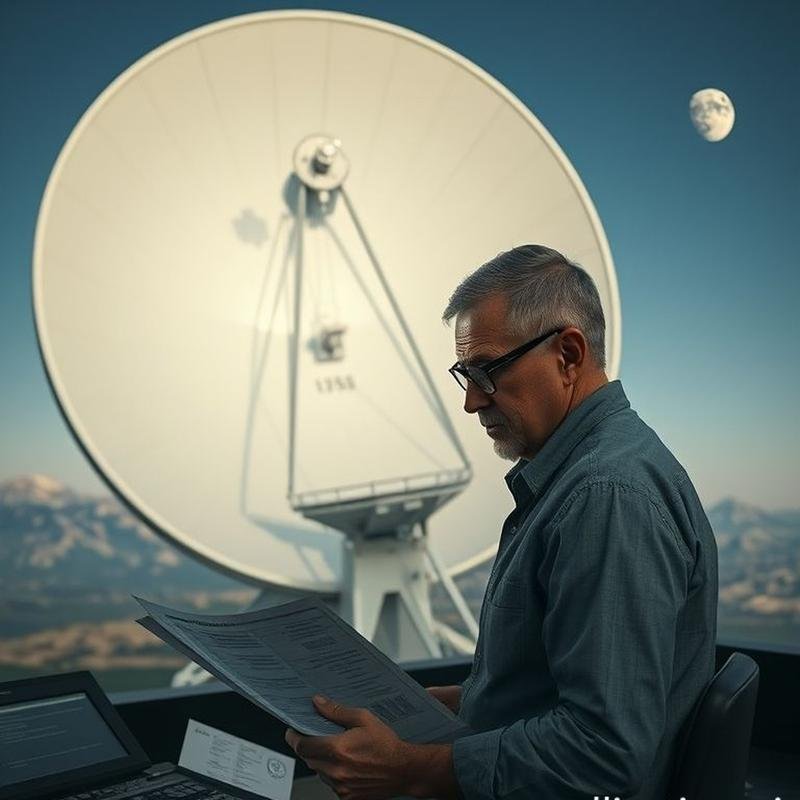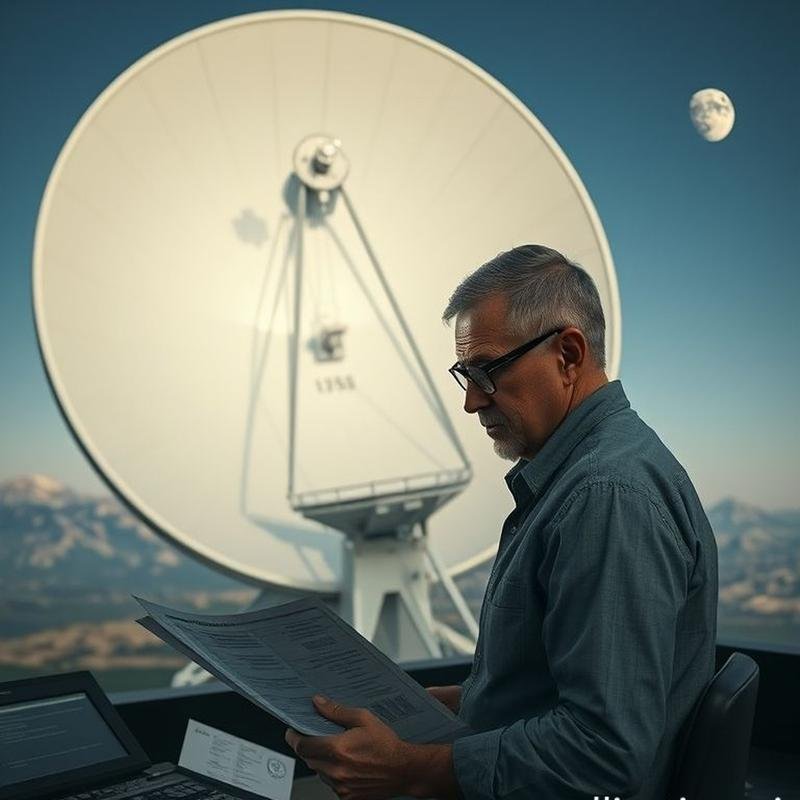The “Wow!” Signal: Extraterrestrial Communication or Cosmic Illusion?

Wow! Signal: Alien Contact or Cosmic Noise?
What if the most profound silence in human history originated from absolute nothingness? In the following minutes, we will delve into the depths of the Wow! signal, a perplexing cosmic enigma that has eluded scientists for decades, and explore why its explanation might be even more extraordinary than an encounter with extraterrestrial intelligence.
Since 1977, those fleeting 72 seconds, like a suppressed cry from deep space, have persistently captivated us. Was it merely a transient cosmic anomaly, or irrefutable evidence of intelligence beyond our planet? We will examine how the ongoing search for Earth-like planets and advancements in detection technologies have reopened this mysterious case, revealing possibilities that are both more alarming and more compelling.
Before we embark on this challenging investigation, please share your initial hypotheses in the comments section. And to ensure you don’t miss any episode of this truth-seeking endeavor, subscribe to our documentary channel.
Understanding Radio Astronomy
To comprehend the significance of that peculiar signal, let’s briefly revisit the field of radio astronomy. This is not merely another scientific discipline; it is a meticulous process of listening to the faint whispers of the cosmos, the radio waves emanating from distant galaxies and deep within nebulae, rather than relying on visible light. Imagine colossal radio telescopes, gigantic antennas continuously scanning the sky, unaffected by cosmic dust or gaseous clouds that obscure light. They serve as the eyes and ears of scientists, enabling them to perceive the imperceptible and hear the inaudible.
The Wow! signal, specifically, was detected at the critically important frequency of 1420.4056 MHz. This frequency is not arbitrary; it is the frequency of the neutral hydrogen line, the most abundant element in the universe. Scientists consider it a natural reference point, a prominent marker that might attract the attention of any extraterrestrial civilization attempting to communicate.
The 72-Second Mystery
On August 15, 1977, the Big Ear radio telescope at Ohio State University detected this transient signal. It lasted only 72 seconds, the maximum duration the telescope could record from a specific point in the sky. Despite rigorous attempts to redirect the telescope to the same region, scientists were unable to recapture it. Were those 72 seconds merely a fleeting cosmic coincidence, or were they a glimpse into another world?
Following that singular event, researchers embarked on an intensive investigation. Was this signal a greeting from another civilization? The idea was compelling, especially considering the signal’s frequency of 1420 MHz. This was not a random selection; it was a pre-established beacon among astronomers, a frequency within the cosmic water hole, a natural reference point considered a prominent marker likely to attract the attention of any extraterrestrial civilization seeking to establish contact.
The hypothesis was enticing, but skepticism quickly arose. Could the signal be merely stray radiation from an Earth-orbiting satellite passing through the telescope’s field of view? Or was it simply a transient burst of radio interference? Scientists meticulously examined all potential sources, systematically eliminating known satellites and terrestrial interference. However, the natural source of the signal remained elusive. Despite continuous and repeated searches, no one has been able to detect any similar signal emanating from the same region of the sky. More advanced telescopes were directed towards the same coordinates, but only silence answered their inquiries. Was the Wow! signal merely a cosmic illusion, or was it a fleeting glimpse of something far greater, an unsolved mystery lurking in the vast expanse of space?
The Challenge of Interference
In 1977, the silence of outer space was not the only concern for radio astronomers. The Earth itself was saturated with the noise of interfering signals. Imagine over 20,000 pieces of space debris orbiting our planet, each capable of reflecting or distorting those faint radio signals originating from the depths of the cosmos. Derelict satellites floating in space were not the only problem. Microwaves that heat our meals, television broadcast signals that transmit news and entertainment, and even classified military satellites all operate at frequencies dangerously close to those used by radio astronomers in their rigorous search.
Astronomer Jerry Ehman, the discoverer of the enigmatic Wow! signal, attempted to mitigate this challenge by developing what is known as the Ehman filter. The purpose of this filter was to purify the data from problematic terrestrial interference, but it was not a perfect solution. Ehman could not definitively eliminate all potential sources of interference. Even today, terrestrial interference remains a significant challenge. For example, near busy airports, aircraft radar can overwhelm telescopes with spurious signals, rendering scientific research an impossible task.
Technological Advancements
Fortunately, however, technology has advanced significantly. Modern radio telescopes now employ sophisticated techniques such as beamforming to focus reception and reduce interference. Advanced signal processing also utilizes complex algorithms to differentiate between desired signals and noise.
Cosmic Deception
But could the universe itself be a source of deception? In 1967, Jocelyn Bell Burnell received an unusual signal, jokingly referring to it as Little Green Men. It later transpired that this signal was merely regular pulses emitted from a pulsar, a natural cosmic beacon, and not a message from a distant civilization. Pulsars are not the only phenomena capable of misleading us. Even comets, with their evaporating icy tails, can emit radio signals that mimic those we are desperately seeking. Project SETI is acutely aware of this risk and has strict protocols to eliminate terrestrial and natural interference. However, even these precise filters cannot guarantee absolute certainty.
Fast radio bursts, or FRBs, represent another perplexing enigma. Initially, some secretly hoped that these bursts were extraterrestrial messages, but most scientists now tend to believe that they are caused by extreme astronomical phenomena. Doppler analysis, that powerful tool, can help us determine whether a signal is moving relative to Earth, but even this analysis is not a panacea that eliminates all doubt. The Wow! signal, which Jerry Ehman annotated in astonishment, remains a silent testament to the fact that nature is often more complex than we imagine.
Renewed Hope and Future Endeavors
But hope has not been abandoned. In the field of the search for extraterrestrial life, efforts are constantly being renewed. Project SETI@home, launched in 1999, remains active, drawing its energy from millions of volunteers who utilize the processing power of their computers to analyze radio data originating from space, hoping to find a glimmer of hope, a signal indicating the existence of another civilization. Now imagine the Square Kilometre Array, or SKA, telescope, an engineering marvel currently under construction. This colossal telescope, the largest ever built, will provide us with the ability to detect the faint whispers emanating from the depths of the cosmos, faint signals that may have been missed in the past. And in 2016, the Breakthrough Listen initiative, generously funded, was launched as the largest scientific search for extraterrestrial life, utilizing giant telescopes such as Green Bank and Parkes.
Returning to the Wow! signal itself, scientists have not ceased attempting to understand it. Antonio Paris reanalyzed the original data with modern techniques, searching for an explanation that might be closer than we imagine, such as a passing satellite. And artificial intelligence, thanks to its superior ability to analyze complex data, offers us renewed hope of discovering hidden patterns that may escape our notice. In 2017, the Allen Telescope Array directed its gaze towards the star 2MASS 19281982-2640123, in the same region from which the signal originated, but to no avail. Will the coming days reveal the secret of this mysterious signal?
The Lingering Questions
Have we overlooked something? The coordinates of that historic moment (RA 19h25m36.46s Dec -89° 26 16) lie in the heart of the constellation Sagittarius, where stars adorn the night sky. Big Ear, that giant telescope with its unique design, was unable to pinpoint the source precisely, leaving behind a veil of considerable uncertainty. Only three arcminutes separate us from certainty, a narrow range but wide enough to conceal the truth. Despite directing the most powerful modern telescopes, such as ALMA and VLA, towards that celestial location, no echo of the mysterious signal has been detected. Jill Tarter made strenuous efforts in the 1990s, but only deafening silence was the response she received.
Was the signal merely an illusion? A fleeting reflection from a satellite that had deviated from its course, or an atmospheric phenomenon we have yet to identify? The possibilities remain unresolved, stirring within us a mixture of intense curiosity and profound questioning. Perhaps we are on the verge of a pivotal moment in the history of human thought, a moment that transcends the discovery of a new planet or the solution of a complex mathematical equation; it is a moment that heralds a radical shift in our perception of the vast universe, and of ourselves.
The Broader Implications
Only the great recognize the greatness of others, a saying that may transform into a prophecy. Do we possess the courage to accept the possibility that we are not alone? Do we acknowledge the existence of other worlds, perhaps more advanced than our own, sharing this vast universe? The discovery of other life in the universe will forever alter our understanding of what it means to be human, Stephen Hawking’s words resonate within us. Will we redefine our identity, our values, and even our aspirations? Will we perceive planet Earth as a minuscule grain of sand in an infinite cosmic ocean?
But what if we find nothing? What if we remain isolated in this vast expanse? Here, the Rare Earth hypothesis emerges, reminding us that the exceptional conditions that led to the emergence of life on our planet may be remarkably unique. Does this imply that we are a precious jewel in this immense universe? Where is everybody?, Fermi’s paradox relentlessly confronts us. Why haven’t we detected any other signals? Are we at the forefront, ahead of everyone else, or are we too far behind, unable to catch up with them yet?
The search for extraterrestrial life is essentially a search for







